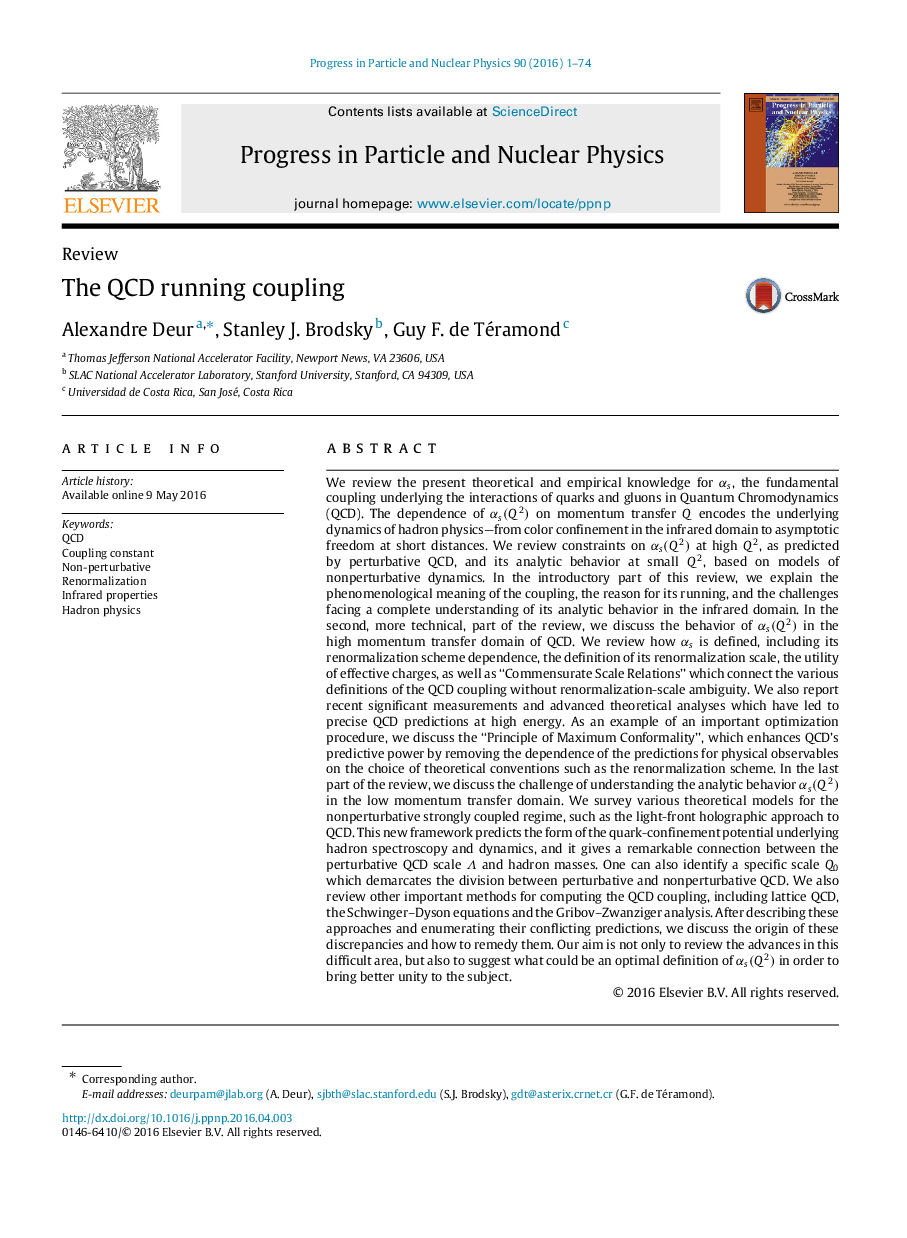| Article ID | Journal | Published Year | Pages | File Type |
|---|---|---|---|---|
| 1853804 | Progress in Particle and Nuclear Physics | 2016 | 74 Pages |
We review the present theoretical and empirical knowledge for αsαs, the fundamental coupling underlying the interactions of quarks and gluons in Quantum Chromodynamics (QCD). The dependence of αs(Q2)αs(Q2) on momentum transfer QQ encodes the underlying dynamics of hadron physics—from color confinement in the infrared domain to asymptotic freedom at short distances. We review constraints on αs(Q2)αs(Q2) at high Q2Q2, as predicted by perturbative QCD, and its analytic behavior at small Q2Q2, based on models of nonperturbative dynamics. In the introductory part of this review, we explain the phenomenological meaning of the coupling, the reason for its running, and the challenges facing a complete understanding of its analytic behavior in the infrared domain. In the second, more technical, part of the review, we discuss the behavior of αs(Q2)αs(Q2) in the high momentum transfer domain of QCD. We review how αsαs is defined, including its renormalization scheme dependence, the definition of its renormalization scale, the utility of effective charges, as well as “Commensurate Scale Relations” which connect the various definitions of the QCD coupling without renormalization-scale ambiguity. We also report recent significant measurements and advanced theoretical analyses which have led to precise QCD predictions at high energy. As an example of an important optimization procedure, we discuss the “Principle of Maximum Conformality”, which enhances QCD’s predictive power by removing the dependence of the predictions for physical observables on the choice of theoretical conventions such as the renormalization scheme. In the last part of the review, we discuss the challenge of understanding the analytic behavior αs(Q2)αs(Q2) in the low momentum transfer domain. We survey various theoretical models for the nonperturbative strongly coupled regime, such as the light-front holographic approach to QCD. This new framework predicts the form of the quark-confinement potential underlying hadron spectroscopy and dynamics, and it gives a remarkable connection between the perturbative QCD scale ΛΛ and hadron masses. One can also identify a specific scale Q0Q0 which demarcates the division between perturbative and nonperturbative QCD. We also review other important methods for computing the QCD coupling, including lattice QCD, the Schwinger–Dyson equations and the Gribov–Zwanziger analysis. After describing these approaches and enumerating their conflicting predictions, we discuss the origin of these discrepancies and how to remedy them. Our aim is not only to review the advances in this difficult area, but also to suggest what could be an optimal definition of αs(Q2)αs(Q2) in order to bring better unity to the subject.
